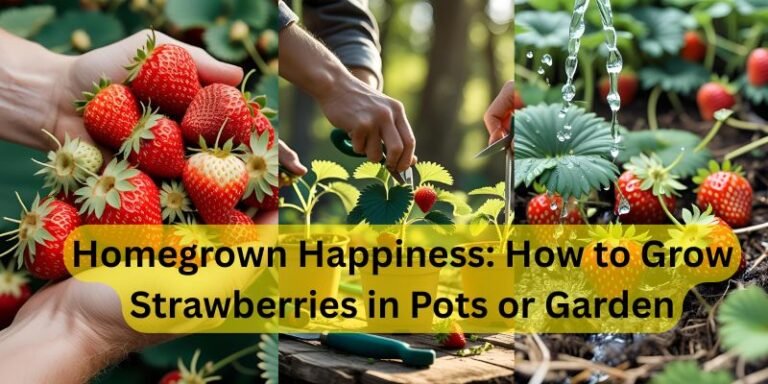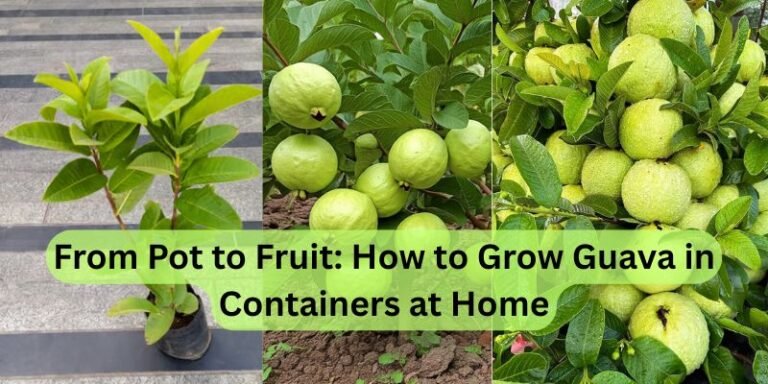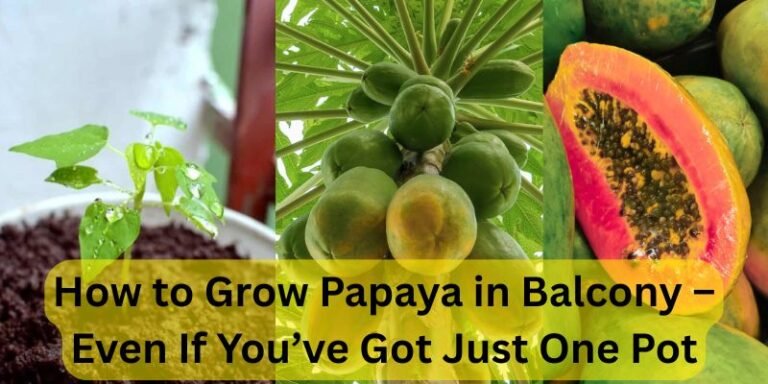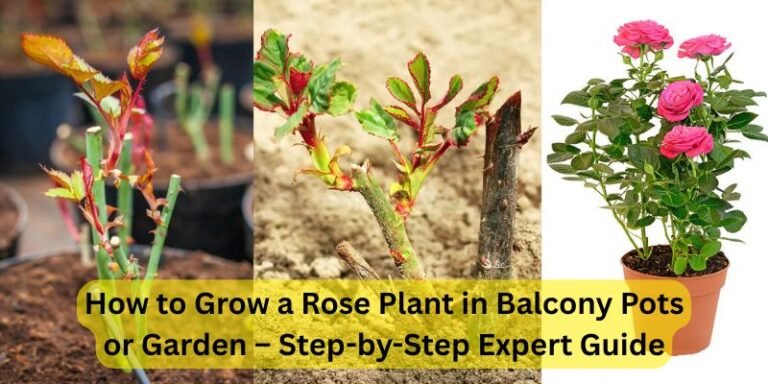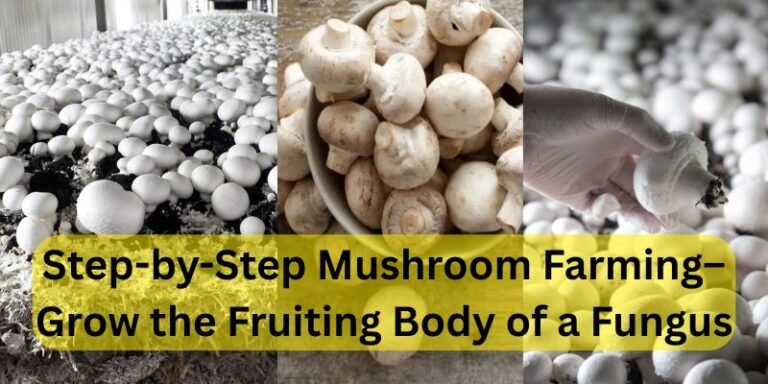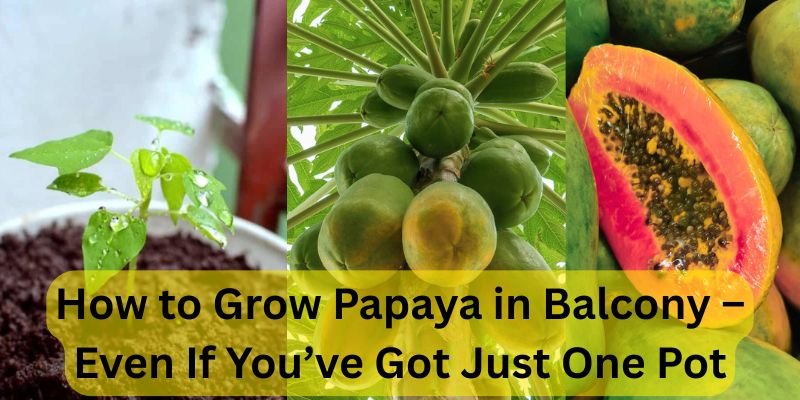
Faiz Khan
How to Grow Papaya in Balcony or garden: You know what’s great about papaya? It doesn’t ask for much. Just a bit of sun, some water, and that’s it. It grows fast, really fast. Even if you’ve only got a balcony or a corner on your terrace, it’ll still do fine. Just make sure to get the smaller types – dwarf ones. They don’t take over your space and still give you sweet, fresh fruit.

1: Choose the Right Variety
Look man, if you don’t have much space, don’t go for the big papaya plants. Just get the small ones — dwarf or hybrid types. They grow fine in a pot, won’t crowd your balcony, and still give you fruit. Simple as that.
Recommended varieties:
Red Lady 786 – Popular, high-yielding, fast to fruit
Pusa Nanha – Dwarf variety ideal for pots
Coorg Honeydew – Known for sweet fruits and compact size
These types are perfect for containers or small garden beds.
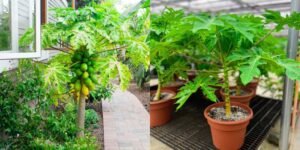
2: Pick a Sunny Location
Papaya plants love sunlight. The more, the better. For healthy growth and fruiting:
Choose a spot that gets 6 to 8 hours of direct sunlight daily
If you’re growing in a balcony, a south-facing one is ideal
Avoid shaded corners or areas with cold winds
Sunlight is key to strong stems and sweet fruits.

3: Prepare the Pot or Soil Bed
If growing in pots:
Use a large container — at least 18–20 inches deep
Make sure it has proper drainage holes at the bottom
Soil Mix for Papaya:
40% garden soil
30% organic compost or cow dung
20% sand or cocopeat (for drainage)
Optional: neem cake powder to prevent pests
Give everything a good mix, then fill up your pot or garden bed. The soil should be light, drain well, and packed with nutrients to keep your papaya happy.

4: Grow from Seeds or Saplings:
. From Seeds
Scoop seeds from a ripe papaya fruit
Wash and dry them for 1–2 days
Sow them 1 inch deep in moist soil
Keep the pot in sunlight
Germination happens in 10–15 days
. From Nursery Saplings:
Buy a healthy, 1–2 feet tall plant
Gently transplant it into the pot or soil bed
Avoid disturbing the roots during planting
Using a sapling speeds up the fruiting process.

5: Watering the Plant:
Water the plant regularly, keeping the soil slightly moist
In hot weather, water daily
In cooler months, water every 2–3 days
Don’t overwater — papaya roots are sensitive to rot
Every 20–25 days, add organic fertilizer or compost to encourage growth and flowering.

6: Care and Maintenance:
Remove dried or yellow leaves to keep the plant healthy
If the plant grows tall, tie it to a support stick
Keep the area clean to avoid pests

7: Monitor for Pests:
Common pests include aphids, mealybugs, and red mites. Here’s how to handle them naturally:
Pest Solution
Aphids Spray neem oil weekly
Mealybugs Use soap water spray
Red mites Mist leaves & clean
Check the plant weekly and act early to stop infestations.

8: Harvesting Your Papayas:
Your papaya plant will start fruiting in 6 to 9 months
Harvest when the fruit turns from green to light yellow
Let it ripen indoors for 2–3 days
Homegrown papayas are sweeter and chemical-free!
Extra Tips for Success:
Don’t move the pot frequently — papayas don’t like root disturbance
Grow 2–3 plants together for better fruiting
Note- Avoid waterlogging after rain
Final Thoughts:
Honestly, growing papaya at home? It’s not as hard as it sounds. Just find a sunny spot, put in some decent soil, and give it a bit of water now and then. That’s really it. Before long, you’ll have your own juicy papayas ready to eat. Trust me, once you start, it’s actually kind of fun — and if you’re new to gardening, papaya’s a great plant to try out.
Also read: How to Grow Grapes in Balcony Pots: Easy Guide for Beginners


